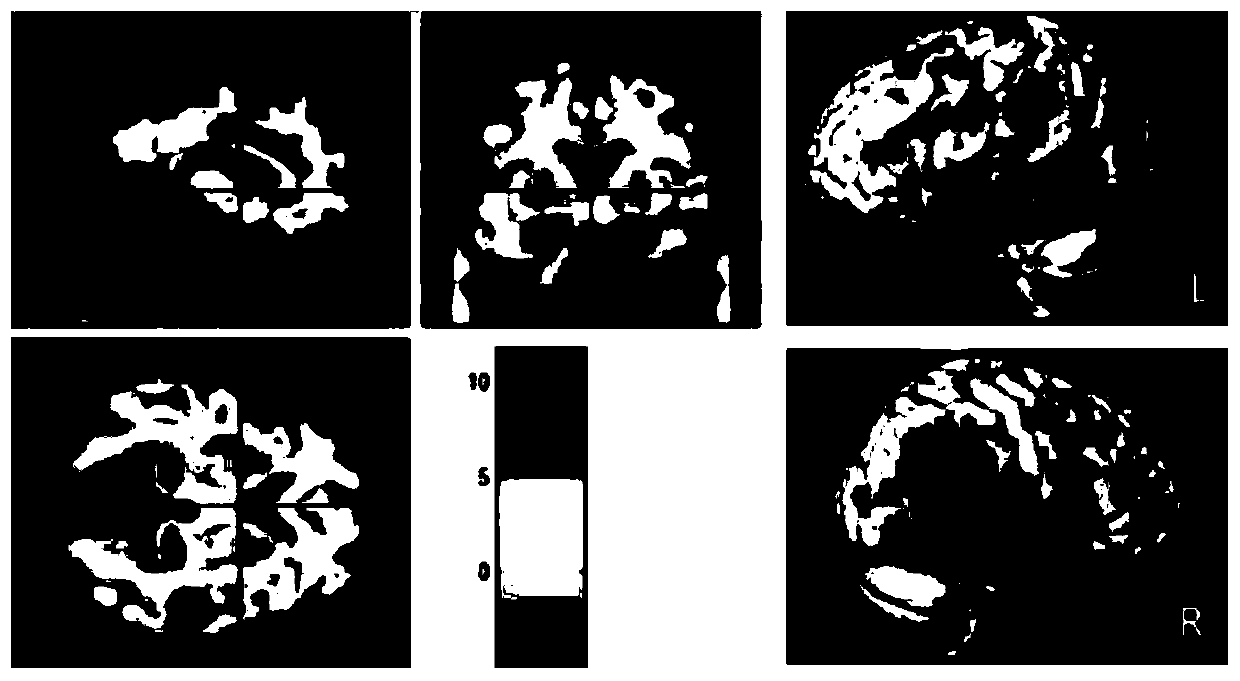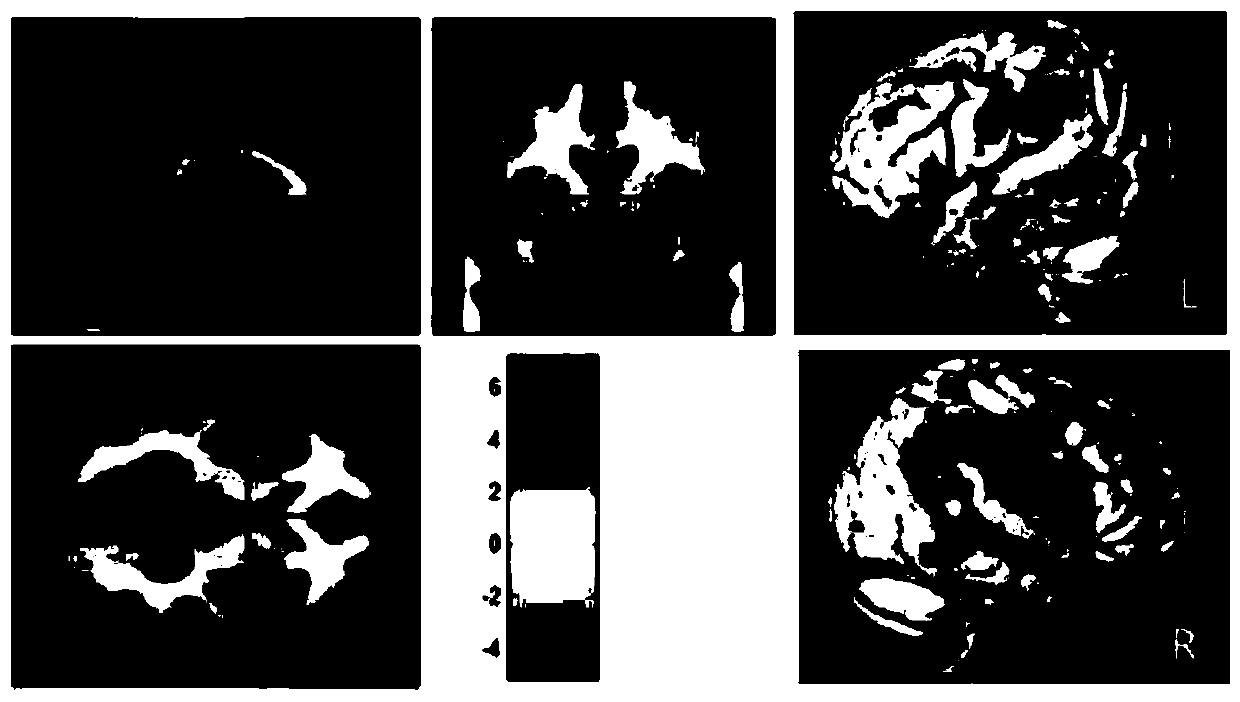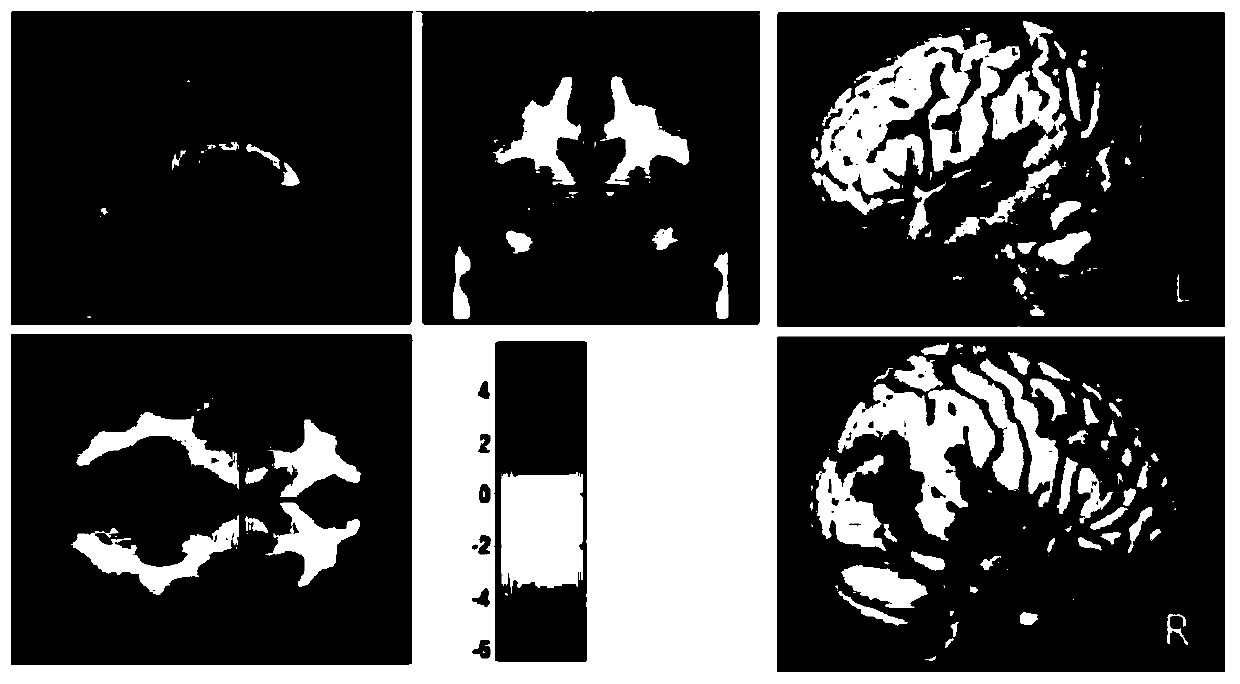An Alzheimer's disease MRI image classification method based on an SVM-RFE-MRMR algorithm
A classification method and algorithm technology, which is applied in the field of medical image classification, can solve the problems of unstable recognition accuracy, high labor intensity, and low efficiency, so as to avoid image reading classification errors, reduce labor intensity, and ensure accuracy and recognition rate Effect
- Summary
- Abstract
- Description
- Claims
- Application Information
AI Technical Summary
Problems solved by technology
Method used
Image
Examples
Embodiment 1
[0109] Example 1. A kind of Alzheimer's disease MRI image classification method based on SVM-RFE-MRMR algorithm, carry out according to the following steps:
[0110] a. Use the VBM (voxel-based morphology analysis) method to determine the lesion area in the MRI image, calculate the gray matter volume of the lesion area as the morphological feature, and extract the texture features including the gray-level co-occurrence matrix and the gray-gradient co-occurrence matrix; The invention combines the three-dimensional information (that is, gray matter volume) and two-dimensional information (that is, the gray level co-occurrence matrix and the gray level-gradient co-occurrence matrix) of the MRI image to extract the morphological features and texture features. Through the combination of the two, the accuracy of the MRI image is improved. Recognition rate.
[0111] b. Combining the morphological features and texture features described in step a (for example: there are three kinds o...
PUM
 Login to View More
Login to View More Abstract
Description
Claims
Application Information
 Login to View More
Login to View More - R&D
- Intellectual Property
- Life Sciences
- Materials
- Tech Scout
- Unparalleled Data Quality
- Higher Quality Content
- 60% Fewer Hallucinations
Browse by: Latest US Patents, China's latest patents, Technical Efficacy Thesaurus, Application Domain, Technology Topic, Popular Technical Reports.
© 2025 PatSnap. All rights reserved.Legal|Privacy policy|Modern Slavery Act Transparency Statement|Sitemap|About US| Contact US: help@patsnap.com



